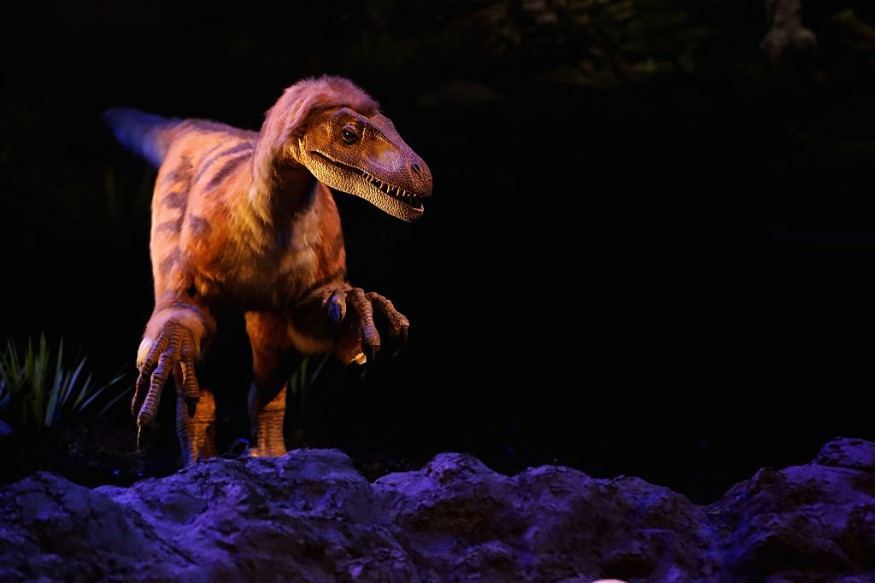Scientists have uncovered the final meal of a 75-million-year-old tyrannosaur, consisting of two baby dinosaurs, shedding new light on their evolving diets. Dr. Darla Zelenitsky of the University of Calgary sees this as compelling evidence that tyrannosaurs underwent significant dietary changes as they matured. The specimen in question is a juvenile gorgosaurus, closely related to the iconic T. rex.

A Dinosaur's Last Meal
The specific gorgosaur described in the study, titled "Exceptionally preserved stomach contents of a young tyrannosaurid reveal an ontogenetic dietary shift in an iconic extinct predator" published in Science Advances, was around seven years old or akin to a teenager in developmental terms and weighed approximately 330 kg at the time of its demise, representing about a tenth of the weight of a fully-grown adult.
Positioned beneath its ribcage, the hind limbs of two small bird-like dinosaurs, known as citipes, are discernible, providing insight into the teenage tyrannosaur's hunting habits. Dr. Zelenitsky, the lead author of the study, notes that these juvenile tyrannosaurs were adept at hunting small, young dinosaurs.
Earlier fossil evidence, including observable bite marks on larger dinosaur bones consistent with tyrannosaur teeth, has allowed scientists to construct a narrative of how three-tonne adult gorgosaurs preyed on large herbivorous dinosaurs living in herds.
Dr. Francois Therrien from the Royal Tyrell Museum of Palaeontology characterizes these adult tyrannosaurs as indiscriminate eaters, likely ambushing large prey and consuming them by biting through bone and scraping off flesh.
However, Dr. Zelenitsky emphasizes that these smaller, immature tyrannosaurs were likely not prepared to engage with groups of horned dinosaurs, where adults weighed thousands of kilograms.
READ ALSO : Re-Analysis of T. Rex Dinosaur Fossils Refutes Theory Claiming There Are 3 Tyrannosaurus rex Species
Juvenile Tyrannosaur's Diet Shift Unlike Adult Predators
The fossil, discovered in Alberta Badlands in 2009, underwent years of preparation at Alberta's Royal Tyrell Museum of Palaeontology. Initially unnoticed, the presence of prey inside was revealed when small toe-bones were observed sticking out from the ribcage. The specimen is a slightly smaller and more ancient relative of the T. rex, the specimen, providing a rare insight into the diet and behavior of juvenile tyrannosaurs.
Gorgosaurus, part of the 75- to 80-million-year-old ecosystem of Dinosaur Provincial Park, is a large predatory dinosaur. The discovery is exceptional as fossilized skeletons of young tyrannosaurs are rarer than those of fully grown individuals.
The well-preserved fossil showed signs of its last meal, providing a unique opportunity to understand the feeding habits of juvenile tyrannosaurs. This finding challenges previous assumptions, suggesting that young tyrannosaurs were adept at hunting smaller prey rather than engaging with large herbivores like their adult counterparts.
The discovery of stomach contents in situ, a first for a tyrannosaur, and the preservation of prey bones offer valuable insights into the dietary habits of juvenile gorgosaurs. This evidence challenges previous notions and provides a clearer picture of the selective feeding behavior exhibited by young tyrannosaurs, highlighting their preference for smaller and younger prey.
RELATED ARTICLE:
Crocodile Had Dinosaur For Its Last Meal Based On 95-Million Year Old Fossil, Study Claims
Check out more news and information on Paleontology in Science Times.
© 2025 ScienceTimes.com All rights reserved. Do not reproduce without permission. The window to the world of Science Times.











